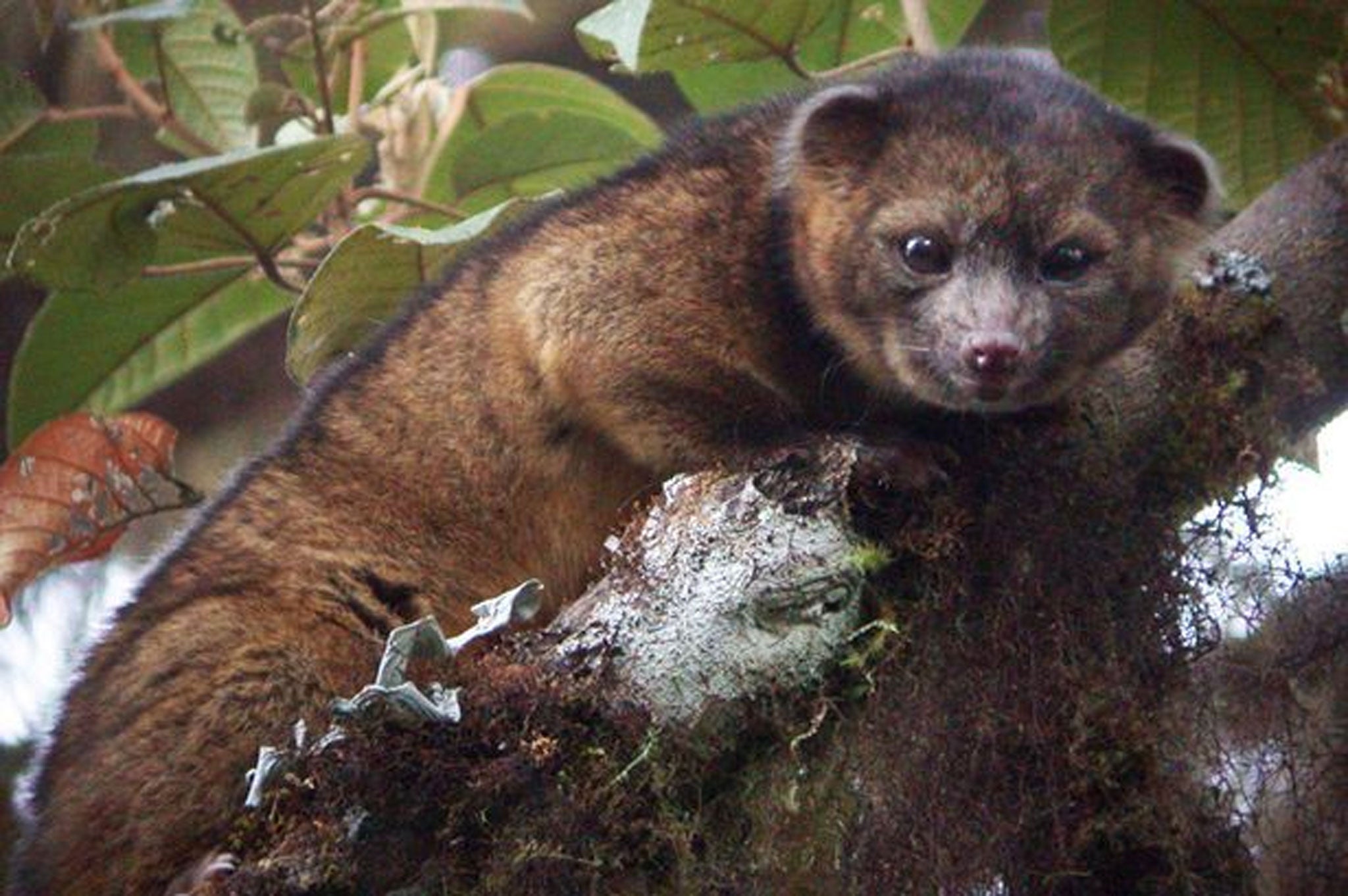New species of mammal identified in jungles of Ecuador – the world's first new carnivore in 35 years
Olinguito described as a cross between 'a teddy bear and a house cat'

A new species of mammal has been identified in the jungles of Ecuador – the first new carnivorous creature to be discovered in 35 years.
The beast’s appearance is not altogether unfamiliar however, as it first went on display in museums over 100 years ago, but had always been mislabelled.
The olinguito has been described as a cross between a “teddy bear and a house cat”, and with solid scientific comparisons like that it’s not hard to see why the animal suffered a century of mistaken identity.
An adult female olinguito named Ringerl was kept at zoos across the United States in the 1960s, with keepers wrongly assuming her to be an olingo – a small racoon-like mammal with a prehensile tail.
It was only during a 10-year study of olingos at the Smithsonian National Museum of Natural History that the new creature was found.
Its long-forgotten remains were discovered in a drawer, analysed, and found to have a huge number differences from a typical olingo.
For a start the fur was far longer and a completely different colour and it also had a shorter tail, different teeth and far smaller ears.
Speaking to the Guardian newspaper, the museum’s curator of mammals Kristofer Helgen said: “We are not talking about splitting hairs. If you saw the two animals side by side you would wonder how they could ever be confused”.
Researchers subsequently trekked through the so-called cloud forests in Ecuador and Columbia, where they were able to discover numerous olinguitos, including four sub-species.
The animal is said to be omnivorous, eating fruits such as figs as well as nectar and insects. It is a solitary animal, nocturnal, and like humans generally produces a single offspring at a time.
Join our commenting forum
Join thought-provoking conversations, follow other Independent readers and see their replies
Comments